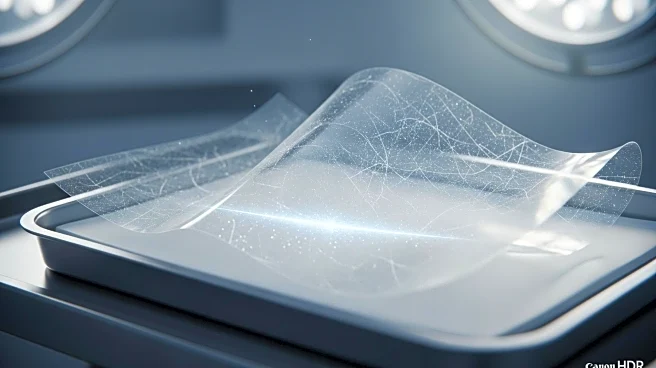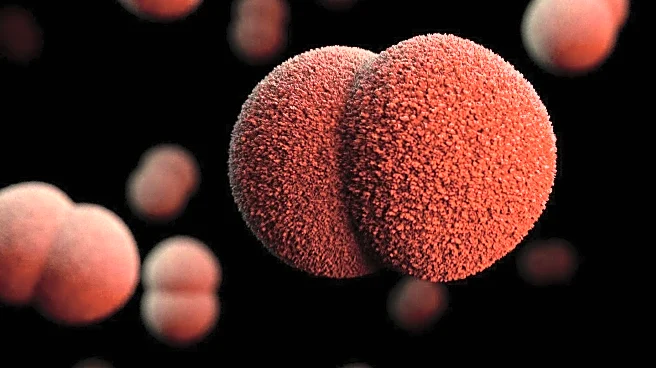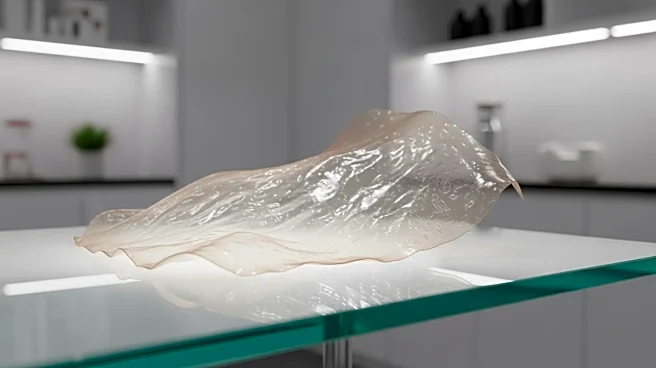What is the story about?
What's Happening?
Researchers have developed a smart polymer film based on hydrogen-bonded organic frameworks (HOFs) that exhibits stimuli-responsive properties, particularly in detecting ammonia, which is indicative of wound infections. The film incorporates anthocyanins, a type of polyphenol known for its color-changing properties in response to pH changes. This feature allows the film to serve as a visual indicator of infection by changing color when ammonia levels rise, a common occurrence in infected wounds. The polymer also demonstrates antibacterial and antioxidant properties, making it a potential candidate for advanced wound dressings. The study highlights the film's ability to release metronidazole, an antibiotic, in response to temperature and pH changes, further enhancing its utility in wound care.
Why It's Important?
The development of this smart polymer film could significantly impact the field of wound care by providing a non-invasive method to monitor infections. The ability to visually detect infections through color changes can aid in timely medical interventions, potentially reducing the risk of complications in chronic wounds such as diabetic ulcers. The film's antibacterial and antioxidant properties also contribute to faster healing and reduced inflammation. This innovation could lead to more effective wound management strategies, benefiting healthcare providers and patients by improving outcomes and reducing healthcare costs associated with chronic wound care.
What's Next?
Further research and clinical trials are likely needed to validate the efficacy and safety of the smart polymer film in real-world medical settings. If successful, the film could be integrated into commercial wound care products, offering a new tool for healthcare professionals. The development team may also explore additional applications of the film in other medical areas, such as dental care, where similar infection detection and treatment capabilities could be beneficial.
Beyond the Headlines
The use of anthocyanins in the polymer film highlights the potential of natural compounds in medical applications. This approach aligns with a growing interest in sustainable and biocompatible materials in healthcare. The film's design also reflects advancements in smart materials that respond to environmental stimuli, a field that could revolutionize various industries beyond healthcare.
AI Generated Content
Do you find this article useful?














